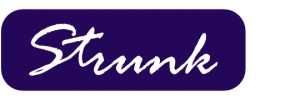Risk Assessments Made Easy for Banks
The risk assessment process for community banks can time consuming and daunting but it doesn’t have to be that way. When Strunk demoed their Risk Assessment tool to regulators in Washington DC they said “community financial institutions struggle doing risk assessments and your program will help them with the necessary process”.
Whether your senior lender is looking at loan concentrations; your IT person doing the risk assessment for cyber security; or your operations team is working the on ACH or BSA risk assessment, generally those doing the assessment hate the process whether it is annually or more frequently.
Key Risk Indicators handed down by the regulators govern the risk assessment process and you must quantify risks and then determine the quality of risk management to determine the “residual risk”. The Strunk solution can help you do this and it is easy to use, automated and affordable. We provide over 950 key risk indicators so you don’t have to come up with your own.
Managing the board approval process for policies can also be a hassle. Our tool tracks changes and allows your associates to either read, make changes, or approve policies based on their log in credentials. When the regulators ask what changes have been made to policies since the last exam all you have to do is click on a button.
Tracking issues that arise from an outside audit or exam may be a manual process as well. Our solution helps coordinate those issues until they are resolved.
Lastly, vendor management is a hassle or in some cases outsourced to a third party vendor. It doesn’t have to be that way.
Contact Strunk at 800.728.3116 or email at info@strunkaccess.com to learn how our Enterprise Risk Management solution can help your bank.


